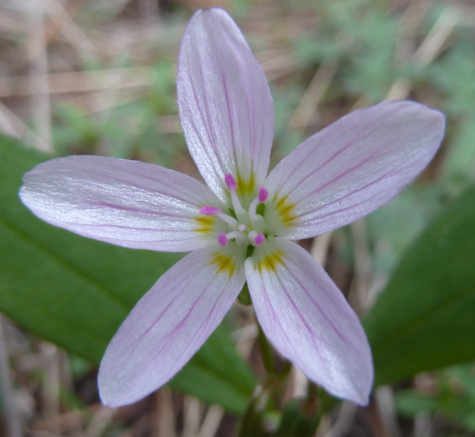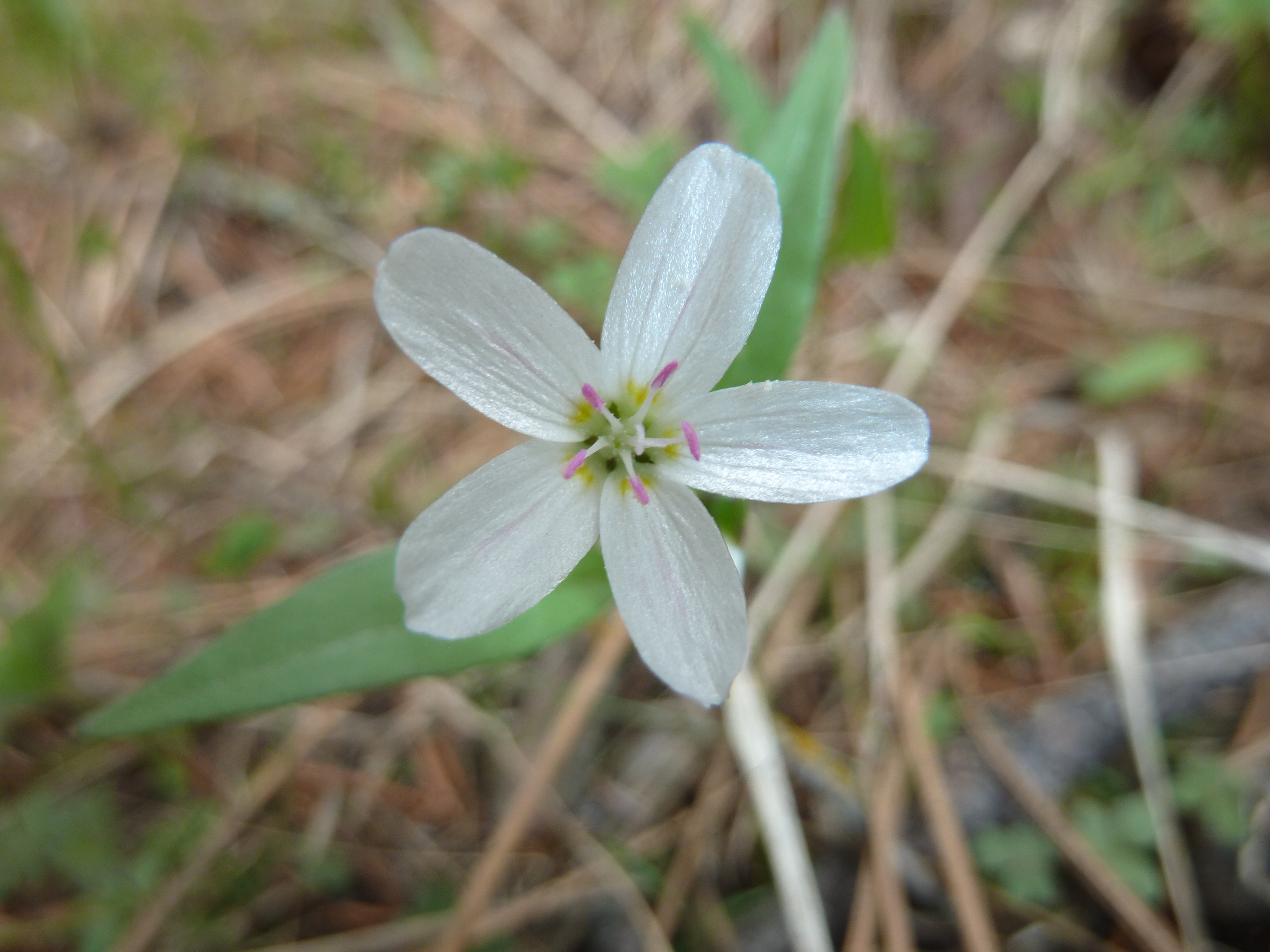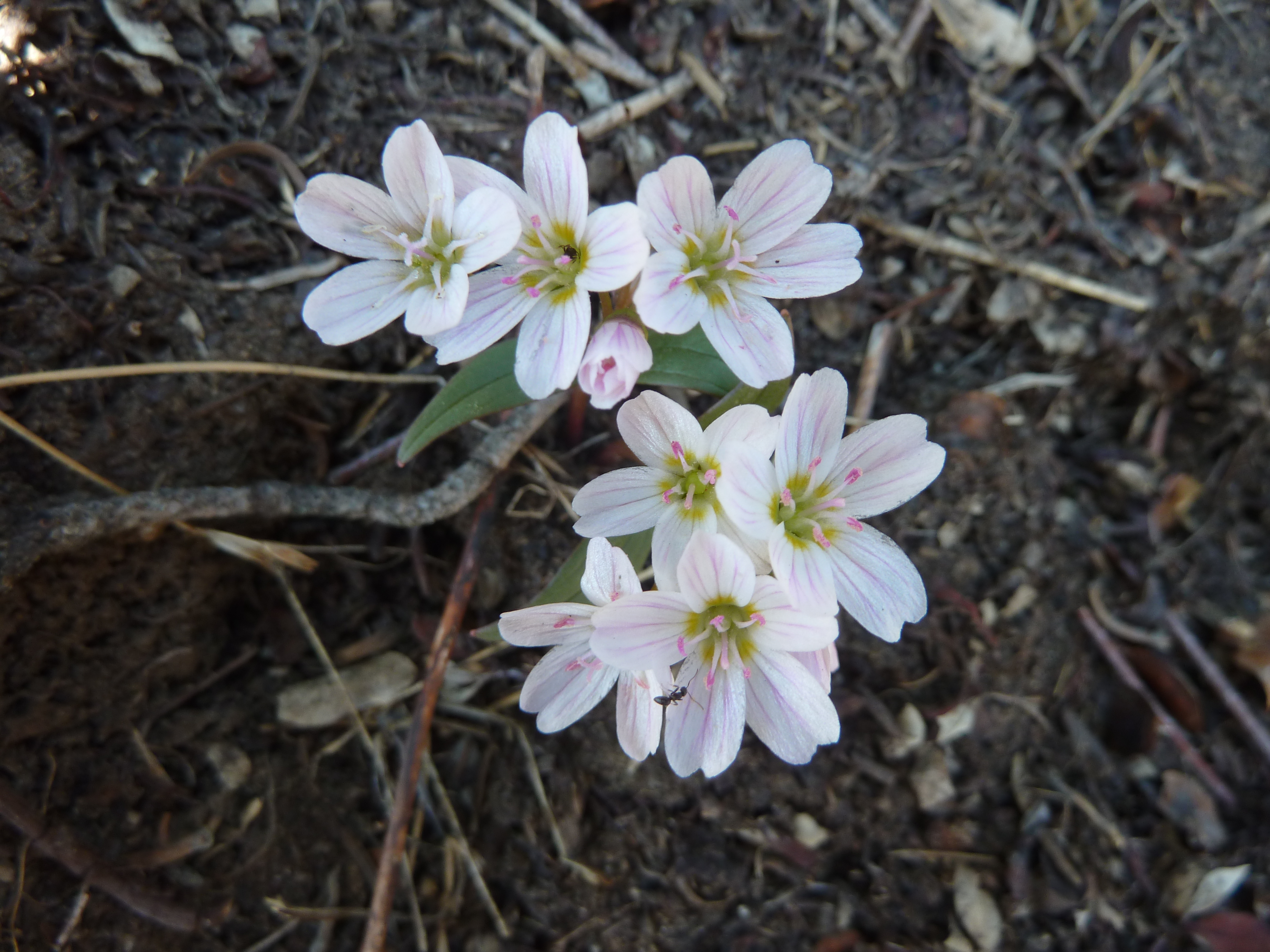


Scientific Name: Claytonia lanceolata
Family Name: Montiaceae
Bloom Period: Mid-spring
Life Span: Perennial
Height: 5-20 cm
Habitat: Widely scattered at mid to high elevations in open, moist, grassy slopes. Sometimes among deciduous shrubs or in areas of late snow beds.
Leaf Description: Erect stem with 1 to few lance-shaped basal leaves, with large underground stalks. Flowering stems will have a single pair of stalkless leaves below the flowers.
Flower and Petal Description: White to pinkish, often with deep pink veins. 2 sepals and 5 petals, in clusters of 3-20 flowers.
Stem Description: Single stem.
Fruit Description: Egg-shaped capsules, each with 3-6 black, shiny seeds.
Medicinal Uses: Leaves are a source of vitamins A and C. Native Americans would cook the corms for carbohydrates i.e the name Indian potato. Native Americans would bury the small corms to ensure a yield the following year.
This flower is native to the area.

